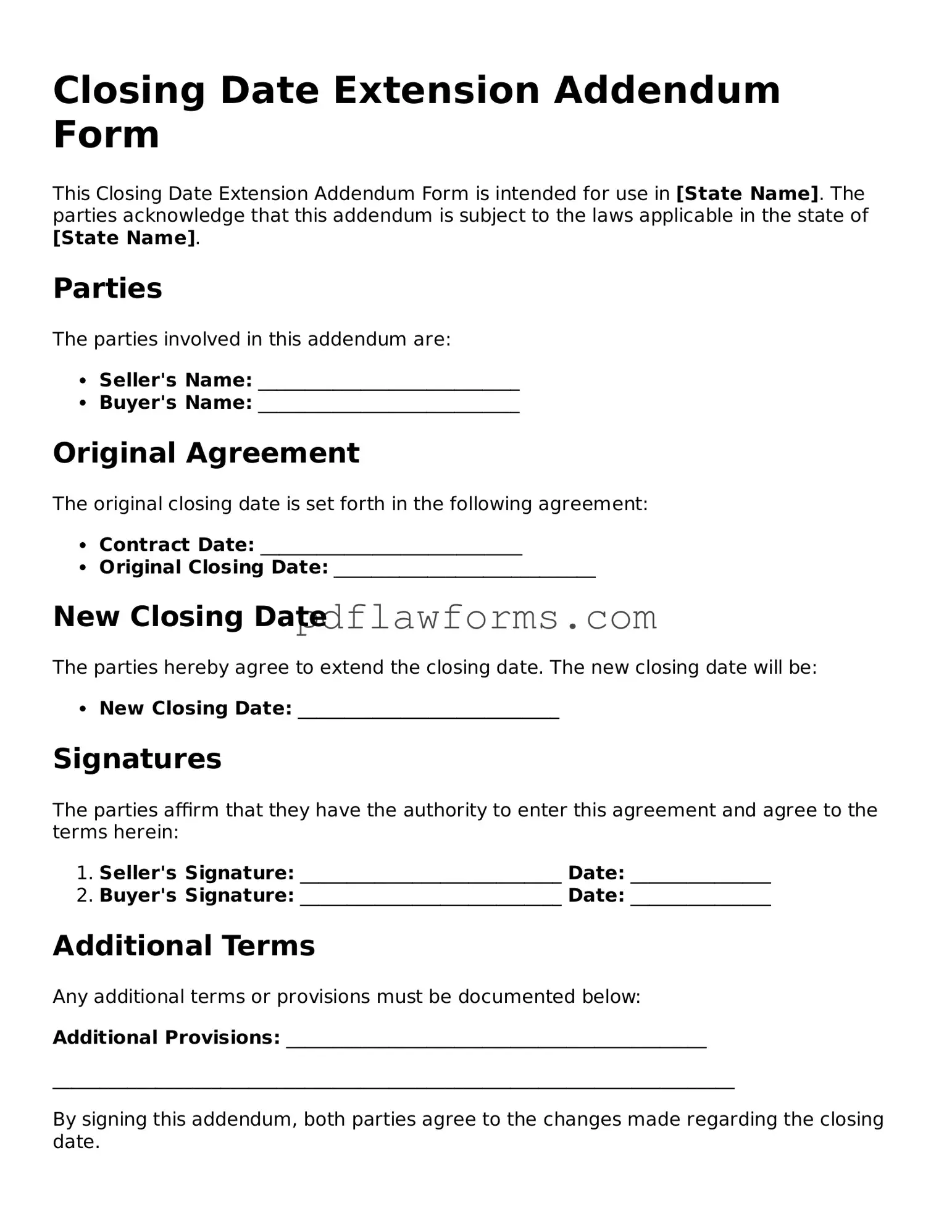Filling out the Closing Date Extension Addendum Form can be straightforward, but many people make common mistakes that can delay the process. One frequent error is failing to include all necessary parties’ signatures. Each person involved in the transaction must sign the form to ensure that the extension is valid. Without these signatures, the addendum may not be enforceable.
Another common mistake is not clearly stating the new closing date. It’s essential to specify the exact date to avoid confusion. Ambiguity can lead to misunderstandings and complications later on. Be precise and clear about the new timeline.
Some individuals overlook the importance of checking the original contract terms. The addendum should align with the original agreement. Failing to reference the original contract can lead to inconsistencies that may cause legal issues down the line.
People often forget to provide a reason for the extension. While it may seem unnecessary, including a brief explanation can help clarify the situation for all parties involved. This transparency can build trust and prevent disputes.
Another mistake is neglecting to date the addendum. Every legal document should have a date to establish when it was created. This date is crucial for tracking timelines and obligations.
Inaccurate information can also be a problem. Double-check all details, such as names, addresses, and dates. Errors in this information can create confusion and may require additional amendments.
Some individuals fail to keep copies of the signed addendum. After completing the form, it’s vital to distribute copies to all parties involved. Having a record helps everyone stay informed and accountable.
Additionally, people sometimes submit the addendum without reviewing it thoroughly. Skimming through the document can lead to missed errors or unclear language. Take the time to read it carefully before submission.
Lastly, many forget to consult with a real estate professional or attorney if they have questions. Seeking guidance can help prevent mistakes and ensure that the addendum meets all legal requirements. It’s always better to ask than to risk complications later.
